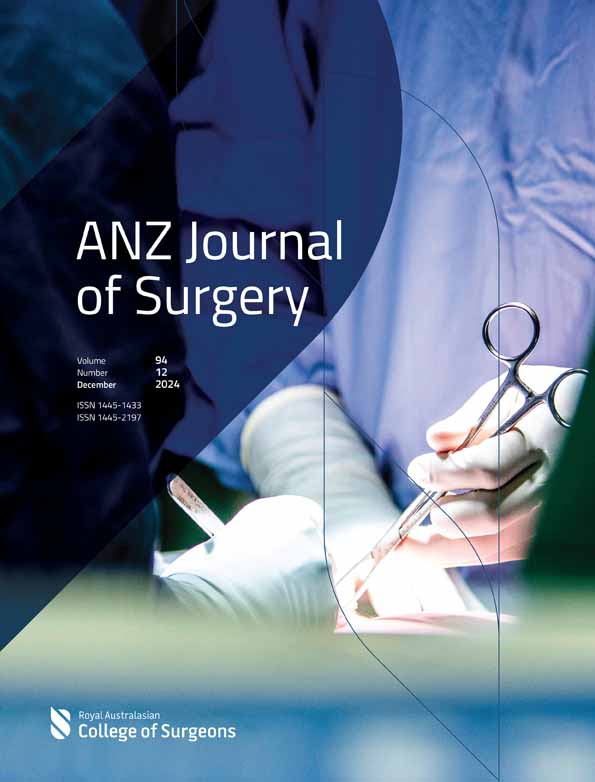Oncoplastic breast surgery: a pictorial classification system for surgeons and radiation oncologists (OPSURGE) – time for a new communication standard?
In this issue of the Journal, an article focuses on the evolving sphere of breast cancer management, particularly the integration of oncoplastic surgery (OPS) with post-operative boost radiotherapy.1 With advancements in breast cancer treatment, survivorship and quality of life have become central concerns, leading to an increased emphasis on preserving the physical, psychological, and social well-being of patients. OPS plays a critical role in this, aiming to restore breast contour following tumour excision and before adjuvant radiotherapy.
One of the key issues highlighted in the article is the challenge of accurately communicating the location of the tumour bed to the multidisciplinary team (MDT) for planning radiotherapy. Local recurrence tends to occur at the tumour bed, and boost radiotherapy has been shown to reduce this risk. However, techniques used to locate the tumour bed following OPS are often less accurate due to the significant changes in tissue distribution caused by the surgery. For example, dead space or seroma formation may not necessarily be at the tumour site, which can complicate the localisation process, necessitating improved communication between surgeons and radiation oncologists (RO).
The article introduces a new classification system called OPSURGE, designed to standardize the description of tumour beds following OPS and facilitate better communication among MDT members. This system builds on previous frameworks, such as Clough et al.'s Level I and Level II classifications,2 and incorporates the concepts of volume displacement and replacement as described by Chatterjee et al.3 OPSURGE categorizes tumour beds into five types (A-D2) based on the degree of tissue rearrangement, the nature of the flaps used, and the extent of seroma formation. The system uses colour-coded images to represent the tumour bed margins and skin incisions, providing a visual guide for surgeons and radiation oncologists.
- Type A Tumour Bed: Created by traditional wide local excision without oncoplastic techniques. The tumour bed has minimal glandular tissue mobilization and is often filled with seroma.
- Type B Tumour Bed: Results from Level I oncoplastic techniques, where glandular tissue is mobilized and sutured to reduce seroma formation. The skin incision is often remote from the tumour bed.
- Type C Tumour Bed: Formed by Level II oncoplastic techniques involving significant volume displacement. The breast tissue is extensively mobilized and rearranged, often distorting the original tumour bed.
- Type D1 Tumour Bed: Commonly would be a Wise pattern therapeutic mammoplasty and can use a secondary dermoglandular or glandular breast tissue flap. This technique alters the breast shape and size and typically involves extensive tissue mobilization.
- Type D2 Tumour Bed: Produced using non-breast tissue, such as a lateral intercostal artery flap. This approach minimizes changes to breast shape and size.
The article emphasizes the importance of accurate tumour bed localisation for the safe delivery of boost radiotherapy, particularly for patients at higher risk of local recurrence, such as those with triple-negative or HER2-positive breast cancer. The OPSURGE framework aims to provide a clear understanding of the post-operative tumour bed to aid radiation oncologists in planning and delivering radiotherapy. Additionally, the article discusses the limitations of current localisation techniques, such as intraoperative clip placement, and suggests that technological advancements, like continuous filament markers, could improve the accuracy of tumour bed identification.
The discussion also addresses the potential for OPS to interfere with newer radiotherapy techniques, such as accelerated partial breast irradiation (APBI), which targets only the portion of the breast affected by cancer, and simultaneous integrated boost (SIB) delivered concomitantly where target coverage and organs-at-risk (OAR) doses can be assessed in a single plan.
The rearrangement of tissue during OPS can distort the tumour bed, making it difficult to target with radiotherapy accurately. The OPSURGE classification system is proposed to help radiation oncologists adapt their planning to these distortions and to carefully consider the safety and utility of extreme hypofractionation (such as the 5# Fast-Forward protocol) and partial breast irradiation (PBI) when these are significant.
The article concludes by calling for further research to correlate the classification system with clinical outcomes, such as local control, cosmetic results, and toxicity. The authors stress the importance of interdisciplinary communication and education to ensure the effective delivery of boost radiotherapy following OPS. They also highlight the need for standardized intraoperative clip placement and closer collaboration between surgeons and radiation oncologists to overcome the challenges posed by OPS in breast cancer management. Careful consideration is needed when determining the value of targeted radiation, such as boost, in higher level oncoplastic surgical procedures with extensive tissue rearrangement.2
It is timely that this article is published as OPS surgery has become the standard of care in many units. We have been utilizing OPS options at the Westmead Breast Cancer Institute, since 2009. The Multidisciplinary Team at Northern Sydney LHD highlighted the importance of mutual understanding between surgeon and radiation oncologist in their review article in 2022.3, 4
Any ambiguity about tumour bed margins is resolved during robust multidisciplinary discussions. For surgeons who do not have the benefit of face-to-face conversations with the radiation oncologists to whom they refer, adoption of the proposed OPSURGE classification could act as a ‘common language’ by which surgeons and radiation oncologists can more accurately understand what has been done to the underlying breast parenchyma and tumour bed margins. Increasingly, the skin incisions used do not overly the tumour and hence can not necessarily be relied upon to guide the boost of radiation to the tumour bed.




